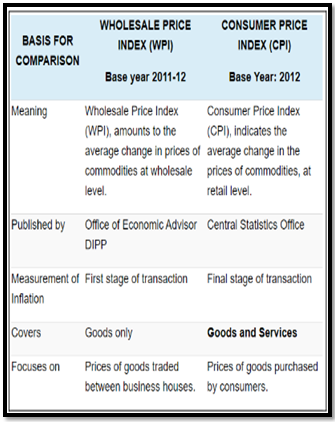OVERHAULING PRODUCER PRICE INDEX: ENHANCING ACCURACY AND RELEVANCE
Why in the news?
The DPIIT Secretary announced a new model for the Producer Price Index (PPI) aimed at better reflecting input costs in the economy.
Consultations with the Ministry of Statistics and Programme Implementation are underway to potentially shift from Wholesale Price Index (WPI) to PPI.
 Source: Toppers
Source: Toppers
Key Developments
- The DPIIT has finalized a new PPI model to enhance accuracy in capturing input prices, forwarded to the IMF for review.
- This initiative seeks alignment with international standards, particularly in G20 economies.
- Discussions are ongoing regarding the change of base year for WPI from 2011-12, considering multiple options for improved statistical relevance.
| Understanding Price Indices in India
Wholesale Price Index (WPI)
- Measures price fluctuations for goods traded in bulk between businesses.
- Published by the Office of Economic Adviser, Ministry of Commerce and Industry.
- Widely adopted as India’s primary inflation gauge.
- Criticized for its focus on wholesale prices rather than retail prices.
- Base year revised from 2004-05 to 2011-12 in 2017.
Consumer Price Index (CPI)
- Reflects price changes from a retail consumer’s perspective.
- Released by the National Statistical Office (NSO).
- Covers various goods and services like food, healthcare, and electronics.
- CPI includes sub-groups: food and beverages, fuel, housing, clothing, and more.
- Four types:
- CPI for Industrial Workers (IW),
- Agricultural Labourer (AL),
- Rural Labourer (RL), and
- Combined (Urban/Rural).
- Base year set as 2012, with recent CPI-IW series using 2016 as the base year.
- Used by the Monetary Policy Committee (MPC) for inflation control since April 2014.
Associated Article:
https://universalinstitutions.com/concerns-raised-over-delay-in-publishing-consumer-price-index-data/ |
Source: Toppers




